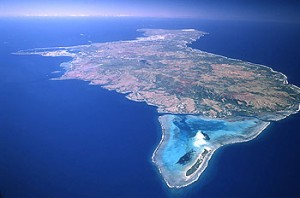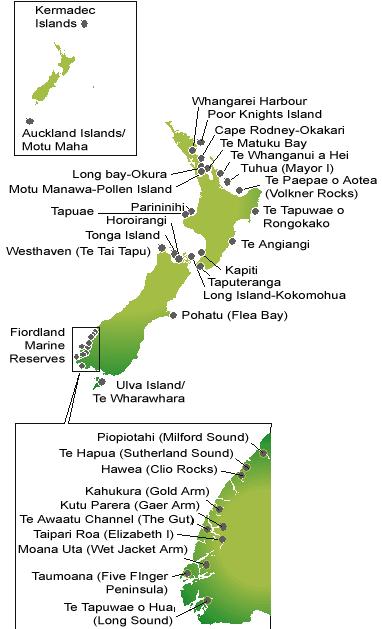Scientists and environmentalists the world over have reacted with pleasant surprise to the news that President Bush has used his last days in office to create three massive marine reserves.

As the Washington Post reports, “by the end of his term [Bush] will have protected more ocean than any person in history”.
Thanks to America’s ownership of a smattering of tiny islands across the Pacific Ocean, it has claim to large swathes of sea territory. Now Bush has created protected areas equalling in size a good-sized country – Spain.
The protected areas “will allow for research, free passage, and recreation — including the possibility of recreational fishing one day. For seabirds and marine life, they will be sanctuaries to grow and thrive. For scientists, they will be places to extend the frontiers of discovery. And for the American people, they will be places that honor our duty to be good stewards of the Almighty’s creation.”
The scientists I saw interviewed on the BBC this evening were positively beaming about the news. As one pointed out, the protection orders also cover everything below the marine reserves – in the case of the Mariana Trench, that’s several kilometres deep, the deepest point in the Earth’s crust in fact. It means coral will be given the chance to grow unmolested and fish stocks will have an opportunity to recover.
Many see Bush’s move as a cynical last-minute attempt to rehabilitate his dismal record in environmental policy (failure to ratify the Kyoto Protocol, opening up of drilling rights for large areas of the US). But the move is unprecedented in scale. There is plenty of evidence to suggest that marine reserves help coral and fish species regenerate.
What exactly is being protected?
From President Bush’s official statement.
- The Marianas Trench Marine National Monument consists of three components:
- The first component of this monument is the waters and submerged lands encompassing the coral reef ecosystem of the three northernmost islands. These islands represent some of the westernmost territory in the United States – 5,600 miles from California. They are home to more than 300 species of stony corals.
- The second component is the Marianas Trench. The trench, the site of the deepest place on Earth, is approximately 940 nautical miles long and 38 nautical miles wide within the Exclusive Economic Zone of the United States.
- The third component is a series of active undersea volcanoes and thermal vents. Twenty-one active hydrothermal submarine volcanoes and vents support life in the harshest conditions imaginable. Many scientists believe extreme conditions like these could have been the first incubators of life on Earth. Further research will allow us to learn more about life on the bottom of the sea.
- The Pacific Remote Islands Marine National Monuments protects the pristine coral reef ecosystems around Kingman Reef, Palmyra Atoll, Howland, Baker, and Jarvis Islands, Johnston Atoll, and Wake Island – the site of a pivotal battle in World War II and an important military base today. These areas support a large number of nesting seabirds and migratory shorebirds, and their pristine coral reefs contain hundreds of thriving fish species and large apex predators and are also home to endangered turtles.
- The Rose Atoll Marine National Monument protects the pristine coral reef ecosystem around a remote part of American Samoa. One of its most striking features is the pink hue of fringing reef caused by the dominance of reef building coralline algae. Rare species of nesting petrel, shearwaters, and terns also thrive on this island, and the waters surrounding it are a home for many species depleted elsewhere in the world, including giant clams and reef sharks.
As New Zealand scientists pointed out last year in a Science Media Centre media release, many current marine protection zones are failing at conservation because they are in the wrong places. I doubt many will argue about the zoning of the “marine national monuments” created by Bush.
New Zealand’s marine reserves
Check out the website of leading marine biologist Dr Bill Ballantine for a good overview of New Zealand’s track record in marine reserves. There’s more information on proposed new marine reserves on the Department of Conservation website.
Below are the marine reserves that currently exist in New Zealand waters. They are numerous but in total cover only a tiny percentage of coastal waters. Environmentalists therefore have argued strenuously for the expansion of marine reserves.
